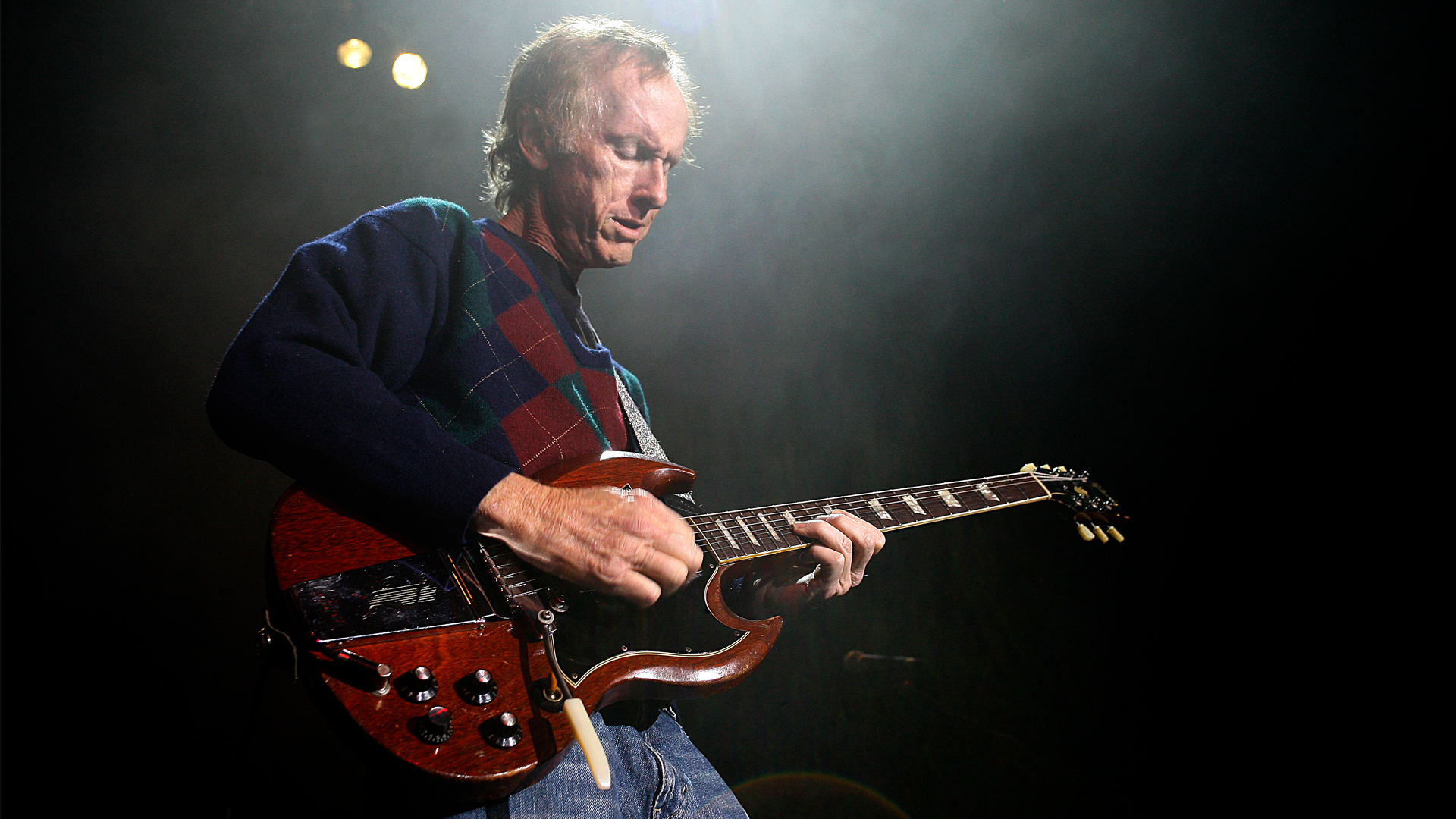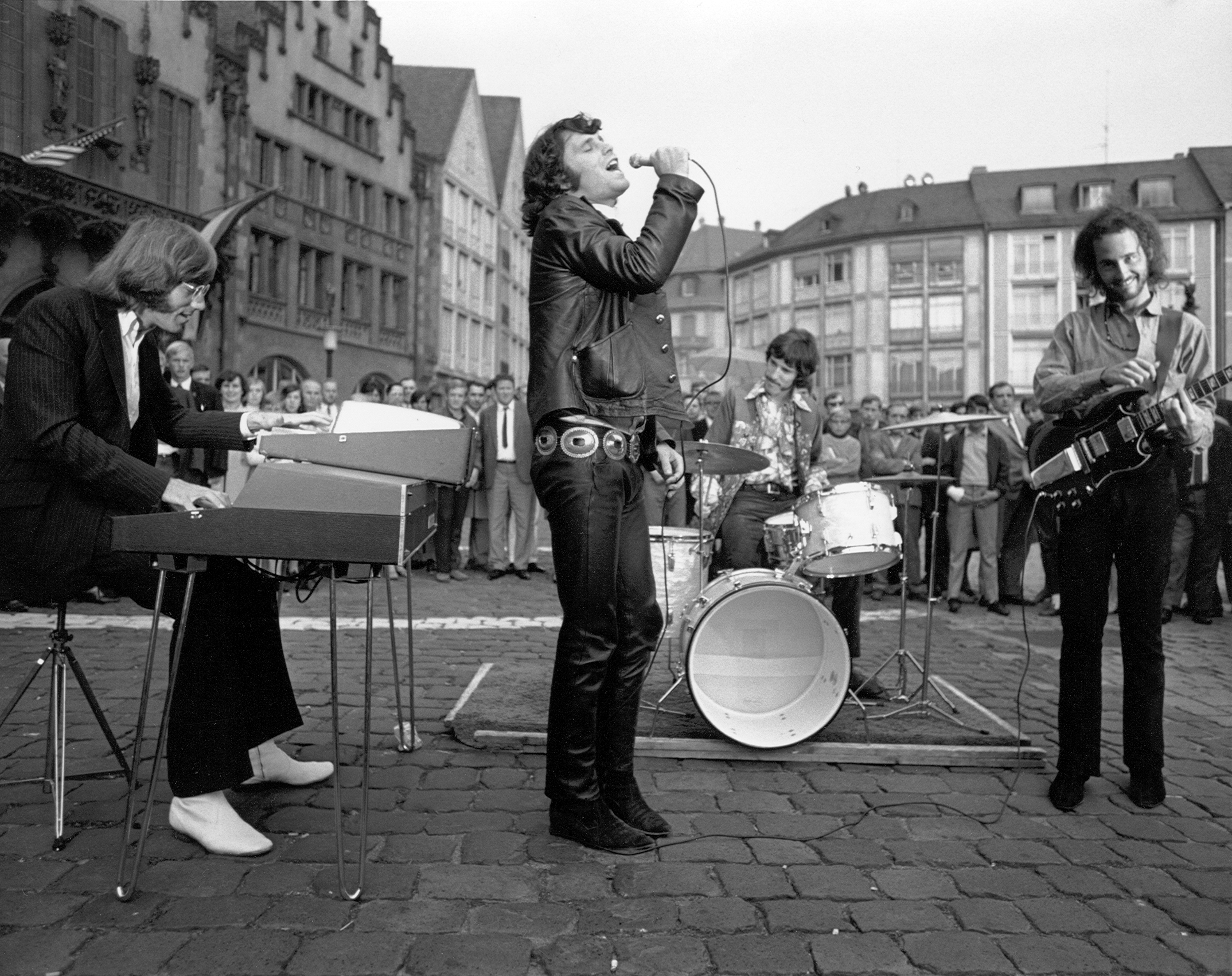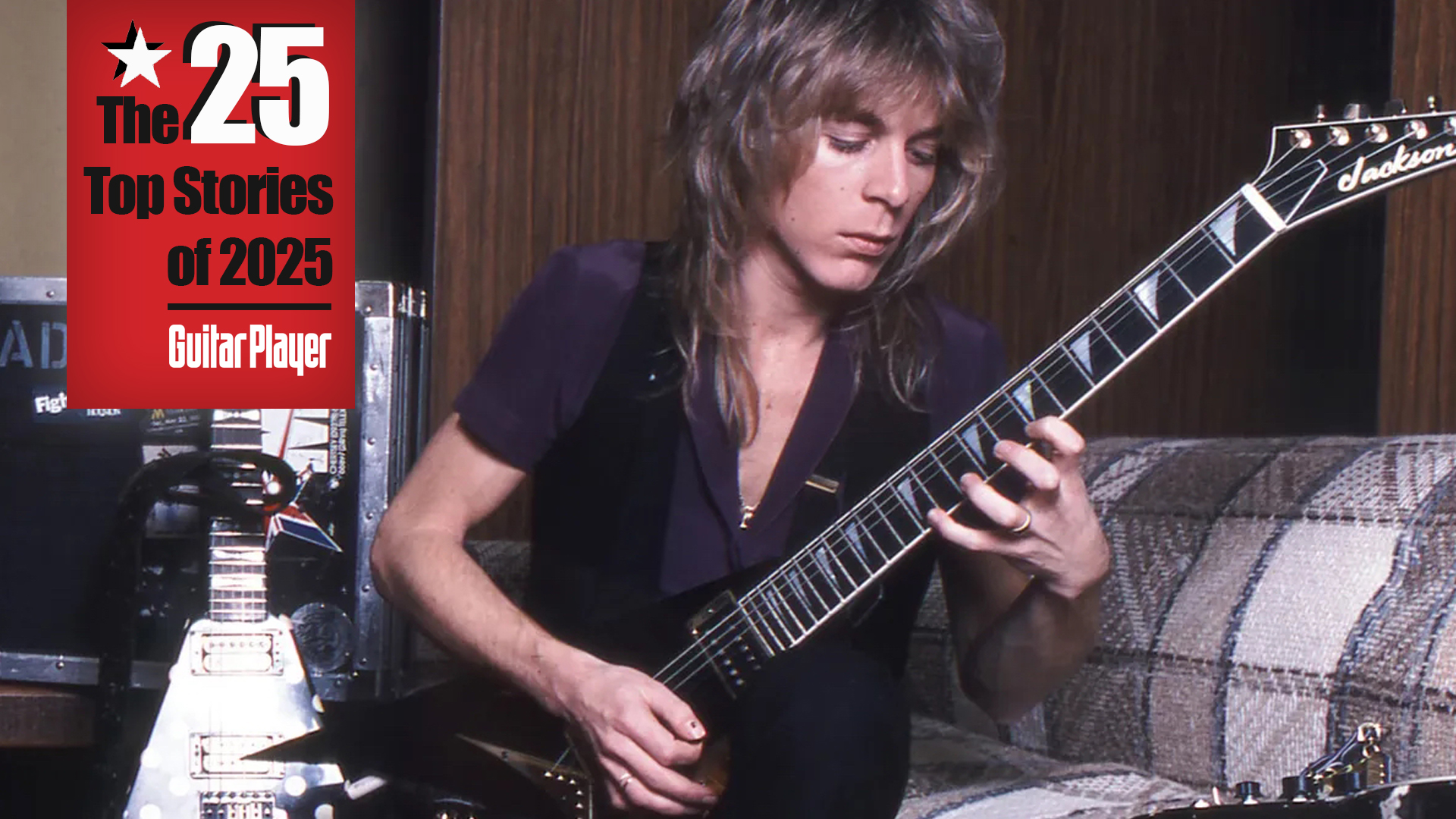"I picked fire because I liked the Stones song ‘Play with Fire.’ ” Here's everything guitarist Robby Krieger didn't tell Rick Beato about how he wrote the Doors' "Light My Fire"
He says his chart-topping song came about because Jim Morrison said "We need more originals"

Former Doors guitarist Robby Krieger recently went on Rick Beato's YouTube channel to discuss the group's 1967 hit "Light My Fire" and dispel a few myths about the song perpetuated thanks to Oliver Stone's fanciful 1991 biopic, The Doors.
One of his main points had to do with the song's composition. Stone made it appear as if the song developed almost instantly. As Beato explains, “You [Krieger's character] pull out a handwritten piece of paper with lyrics on it, and you start playing A minor, F sharp minor, and you sing your melody. And then the Jim Morrison character comes out, and he's like, ‘Yeah, that's good. And they start singing along.’”
As it happens, Krieger spoke with Guitar Player about writing "Light My Fire" in 2020. Here's everything he told us, including what he didn't reveal to Beato.
“Light My Fire” wasn’t the Doors’ first single — that honor went to “Break on Through (To the Other Side).” It was actually the second single chosen for release from the group’s self-titled 1967 debut album, but it propelled the L.A.-based rock group to the top of the charts, made them a major force on the rock scene and became a mainstay of psychedelic rock. And it all began with guitarist Robby Krieger.
Just 21 at the time, Krieger was the youngest member of the quartet, which included Jim Morrison, keyboardist Ray Manzarek and drummer John Densmore. Despite his youth, he was a talented bottleneck slide player and flamenco guitarist, with inspirations that included Albert King and Wes Montgomery.
Krieger tells Guitar Player that when the Doors formed in 1965, he had been playing guitar for only a few years and had made his electric guitar of choice a Gibson SG. “I think my ideas didn’t always match my technique,” he says. “I was 14 when I first picked up the guitar, so when I got out there I was really behind the curve of where a lot of other guitarists were. They could play all the latest songs, but I wasn’t good enough to do that, so I had to make up my own stuff.”
He did so beautifully. And with “Light My Fire,” Krieger would show himself to be a talented songwriter as well, one with an adept skill for combining musical styles and innovative chord transitions into the rock and roll format.
All the latest guitar news, interviews, lessons, reviews, deals and more, direct to your inbox!
As he tells it, “Light My Fire” developed out of necessity.
"We started out playing covers partly because the club owners wanted that, but also because we didn’t have enough of our own songs," he explains. “Jim was the songwriter, and he had about 12 songs written, but we were still playing things like ‘Gloria’ in the clubs."
“Gloria” was certainly a popular tune. Van Morrison wrote it in 1963 and his band, Them, scored a top-10 hit with their 1964 recording. The song made its way to America, where Chicago garage-rock group the Shadows of Knight had a national number 10 smash with it in 1966. The Doors began performing the song soon after, and it remained in their repertoire for years, as evidenced by the 1969 live version that appears on the group’s 1983 compilation, Alive, She Cried.
But Jim Morrison knew as well as anyone that playing covers wasn’t enough to elevate the Doors out of the L.A. clubs. They needed to write their own songs. “At one point,” Krieger recalls, “he said, ‘Guys, we need more originals. Why don’t you try writing some?’
“So I said, ‘Okay. What should I write about?’ And he said, ‘Just write something timeless. Something that won’t go out of style next year.’
“So I thought, What’s timeless? Earth, air, fire, water. I couldn’t go wrong with any of them. I picked fire because I liked the Stones song ‘Play with Fire.’ ” And because so many young groups played simple three-chord tunes, Krieger thought using more chords would help the Doors stand out from the pack. “So I decided that I was going to write a song with a lot of chords,” Krieger says. “Nobody was doing that in rock and roll at the time.”
The chord arrangement he created was certainly unique. Moving from A minor to F# minor on the verses created a vibe that was jazz-like while sounding exotic, sexy and slightly ominous. For the chorus, he switched to a D key center, contrasting light with the verse's dark vibe.
“I wanted to be different,” Krieger says. “It probably took me a couple of days or so before I showed what I had to the guys in the band. They really liked it, so we started playing it.”
It was drummer John Densmore who suggested giving the song a Latin rhythm, emphasizing its jazz underpinnings. Morrison added the lyrics to the second verse and the chorus line “try to set the night on fire.”
“We probably played it live in the clubs for about six months before we made the record,” Krieger says. The song included breaks for guitar and keyboard solos, with Ray Manzarek adding yet another moody dimension with his Vox Continental organ. “We started out with four bars each, but it got longer and longer," Krieger explains. "Live, we used to stretch it out to an hour. Of course, I improvised each time I played it.”

Once in the studio, the song changed in one significant way. To segue from the solos back to the verses, Manzarek had devised a clever Bach-inspired transition that moved from the key center of G, to F to Eb, before landing on A major. It was producer Paul Rothchild’s idea to make it a central motif of the song by adding it to the head of the song and reprising it at the end.
“At first, Ray was playing the same chords as I was at the start of the tune,” Krieger explains. “Our producer, Paul Rothchild, said, ‘Hey, Ray, you do this Bach thing in the middle. Why not play that as an intro?’ It wasn’t like in the [1991] Doors movie, where we all went to the beach and Ray came up with the part.” It was Densmore’s idea to add the simple but effective snare hit to kick off the song.
And while Manzarek covered the low end by playing his Fender Rhodes piano keyboard bass, for the recording Rothchild brought in session musician Larry Knechtel to double Manzarek’s line with a Fender Precision Bass. A member of the famed Wrecking Crew, Knechtel was both a talented bassist and keyboardist, whose credits include the evocative piano work on Simon & Garfunkel’s “Bridge Over Troubled Water,” for which he won a Grammy.
Released as a single on April 24, 1967, “Light My Fire” went to the top of the Billboard Hot 100 chart and went on to become the Doors’ best-selling single. José Feliciano covered the song in an acoustic soul-folk vein, resulting in a crossover success that earned hm a 1969 Grammy for Best Male Pop Vocal Performance. The song itself was inducted into the Grammy Hall of Fame in 1998.
As the group’s signature tune, “Light My Fire” was expected to be part of every Doors concert. As Krieger told Songwriting Magazine, that was never a problem for him or Manzarek. “I never got tired of playing it; nor did Ray, because that was our big solo.
"But Jim got tired of it and would say, ‘Do we have to do "Light My Fire" tonight?’ We knew it was good because whenever we played it live people would go crazy – that was definitely the best response we got from any of the songs.”

Joe is a freelance journalist who has, over the past few decades, interviewed hundreds of guitarists for Guitar World, Guitar Player, MusicRadar and Classic Rock. He is also a former editor of Guitar World, contributing writer for Guitar Aficionado and VP of A&R for Island Records. He’s an enthusiastic guitarist, but he’s nowhere near the likes of the people he interviews. Surprisingly, his skills are more suited to the drums. If you need a drummer for your Beatles tribute band, look him up.
- Christopher ScapellitiGuitarPlayer.com editor-in-chief

